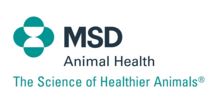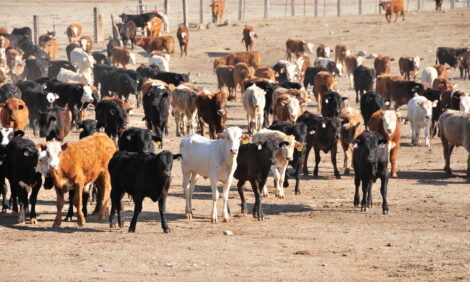



European Mastitis Panel (EMP) Experts Evaluate Management Measures to Prevent Mastitis
EU - Udder health on dairy farms remains a priority and the control of the infectious pressure of mastitis-causing pathogens is key to improving dairy herd productivity. This was the conclusion from the 5th European Mastitis Panel (EMP) meeting that took place near Bristol in southwest England. Fifteen experts from seven European countries participated in a two-day workshop that involved visits to typical regional farms and an intensive exchange of expertise on the latest approaches to mastitis control throughout Europe.Flexible Management
Talking about the weather as a farmer in the United Kingdom is more than a casual chat as on the British Isles dairy cattle farming is mainly pasture based. Rain quantity has a significant impact on grass growth and as a result on the quality and quantity of the main fodder for dairy cattle. Despite the fact that the majority of herds calve all year round, in spring and summer, milk production is increased up to 15 per cent.
“Here, smaller as well as larger farms work profitably”, says Julie Macleod, market researcher at Dairy Co., a non-profit consultancy servicing UK dairy farmers (www.dairyco.org.uk). "Input and management are the decisive factors and farmers are very flexible and react quickly to changes in the milk market."
Milk processing: effective and sustainable
The bulk of the milk is processed as fresh liquid milk (50 per cent) and as cheese (28 per cent). Visiting Robert Wiseman Dairies in Bridgewater, the EMP veterinarians experienced how fresh milk is being collected, processed and bottled daily according to modern standards. 500 Million liters of milk are bottled at this facility each year. Effectiveness and sustainability are the main concerns of the company and as a result, decisive measures have been taken to significantly reduce water, power and fuel consumption.
Distinguished cheddar cheese
At Brue Valley Farm in Somerset (www.brue-valley.co.uk) the team of experts visited the Clapp family dairy cattle herd with 600 Holstein-Friesian cows and a yearly milk output of 9,200 kg per cow. The family can look back at a 500 year tradition of farming cattle. Today it is known for the production of a distinguished cheddar cheese and homemade butter. Veterinarian Dr James Breen and owner Robert L. Clapp showed the group that their immediate herd health priority was cow comfort. Cows calve on rubber mats and clean sawdust and freshly-calved heifers rest on water-beds.
At the cheese dairy on the farm, cheddar and butter are produced daily. Cheddar in the UK by far is the most popular cheese with a market share of 51 per cent. To produce cheddar, milk is heated and laid thick with rennet. After separating the whey from the curds the so-called ‘chedarring’ starts. The curds are cut in blocks of approx. 15 cm length and are put in layers. These piles are then milled, salted, filled in forms and pressed. Finally, the cheddar is put to rest for maturation for 1 to 15 months in wooden boxes.
New laboratory offers modern testing techniques
Since there is no public milk recording in the UK, veterinarian Dr James Breen works closely with the Quality Milk Management Service Laboratory (www.qmms.co.uk). The EMP group was welcomed to the newly opened premises of Dr Andrew Bradley’s QMMS.
The new facility offers farmers the opportunity to take their own milk samples to the laboratory and receive the results of the analysis the following day together with a veterinary interpretation of the data, giving information on the herd’s health status. Moreover, the laboratory offers bacteriological culturing of milk samples with state-of-the-art equipment and offers serological testing for para-TB (Johne’s disease).
Dr Andrew Bradley also offers software for veterinarians and farmers that enables them to find the right causes of mastitis and fine-tune herd management measures.
Mastitis control plan: science for practical application
After the veterinarians from different parts of Europe had gained a comprehensive overview of the local organization of milk production and animal health management, veterinarian Chris Hudson presented mastitis research in the UK. The University of Nottingham is one of the most active institutes in this field, and many relevant studies are conducted there.
Adjacent to a modern campus that is shared with the agricultural faculty, the university also runs a state-of-the-art dairy farm with 180 cows milked through a robotic voluntary milking system. “Research conditions are very favorable here” says Chris Hudson. He is a member of Prof. Martin Green’s, Dr Andrew Bradley’s and Dr Breen’s working group. All scientists in this group are to a certain extent involved in veterinary clinics. As a consequence, they chose a very practical approach to their research.
Recently, they have focused on the development and national roll-out of a mastitis control plan. Their objective was to develop a structured, herd-level approach to mastitis control by which udder health can be improved in the UK.
This National mastitis control program was initially tested using a randomized controlled trial on 52 UK herds, and demonstrated to have a significant benefit for udder health. Subsequently, the plan has been put in place on almost 1,000 UK dairy farms, and early indications are that similar improvements have resulted. The success of the program has depended largely on the degree of compliance with suggested changes, and understanding how to improve this was a key to success.
The most effective measures to lower infection pressure
Taking the management factors of this National mastitis control program in the UK as a starting point, Prof. Theo Lam of Utrecht University in the Netherlands presented Dutch Udder Health research results. The objective was to evaluate the effectiveness of eighteen different management measures and their positive effect on bulk milk and mastitis incidence rate.
The Dutch found that post milking teat disinfection, and good nutrition has the best economic return on improving udder health. Prof. Sarne de Vliegher from Gent University in Belgium pointed out that looking at epidemiology of different Coagulase Negative Stapylococci species—whether they are contagious or environmental—experts will get a better insight into prevention of this pathogen. Lively discussion developed on the relevance and cost-benefit of different herd management factors.
The European Mastitis Panel
The European Mastitis Panel is an MSD Animal Health initiative and consists of a selected, well-established group of mastitis experts. It presents a unique and important platform for udder health related debate and net-working in Europe. This year’s 5th anniversary meeting has again improved the co-operation between the experts from different countries.
| TheCattleSite News Desk | More MSD Animal Health News |



